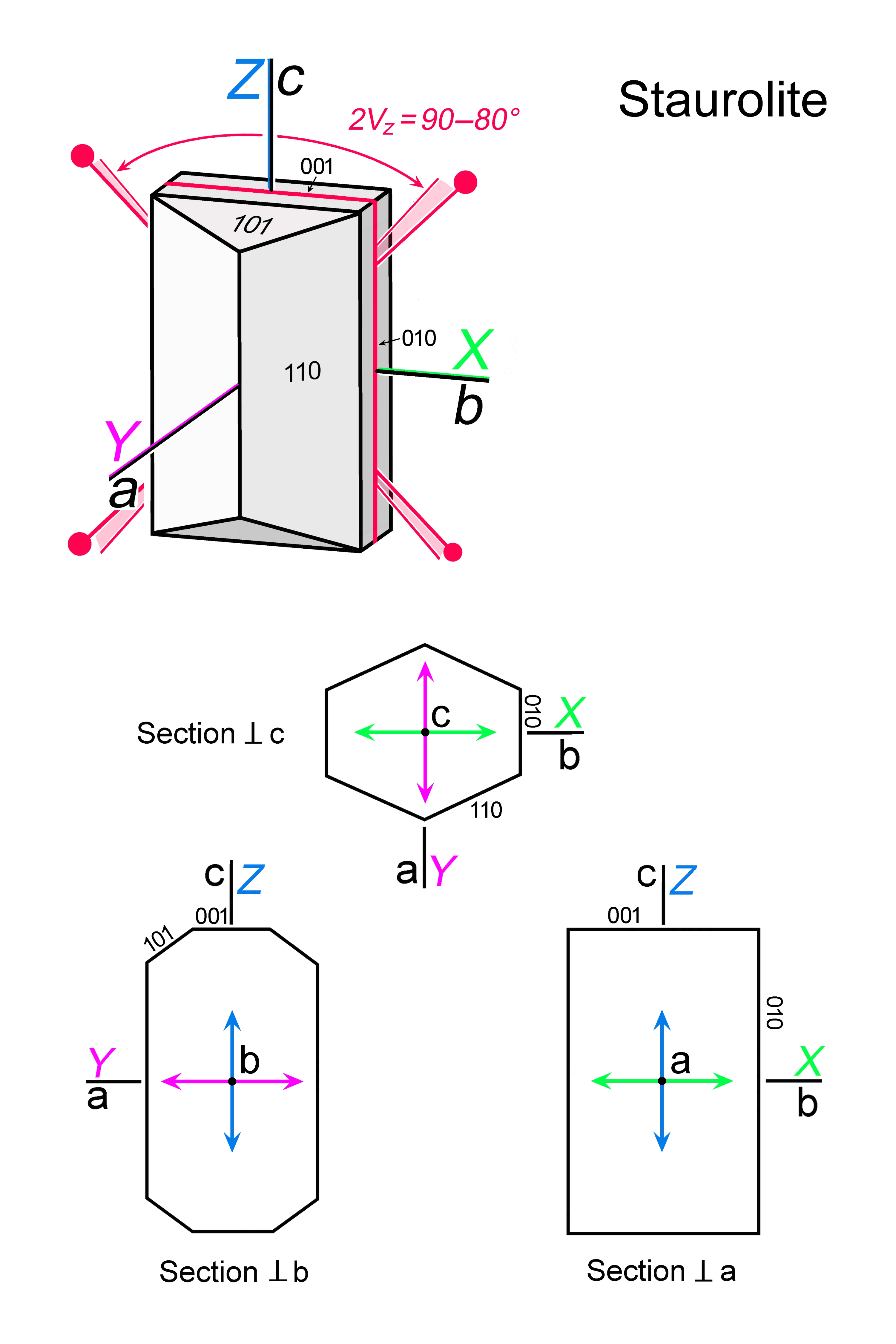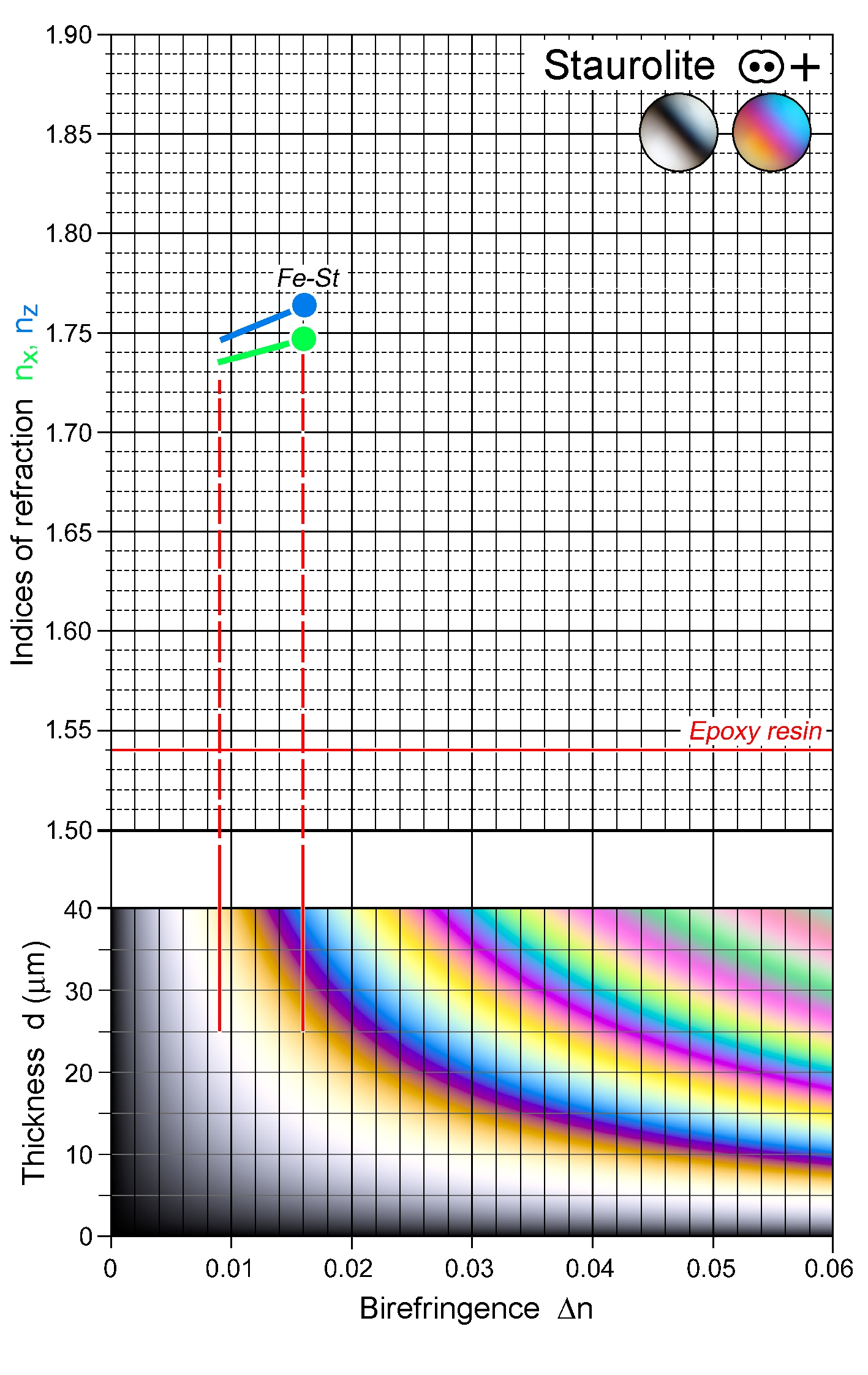|
| Formula | (Fe, Mg,Zn)2Al9O6((Si,Al)O4)4(OH)2 |
| | Optic class & sign | Biaxial positive |
| | Optical orientation | a = Y, b = X, c = Z; pseudo-orthorhombic |
| | Optical plane | (100) |
| | Relief | High |
| | Refractive indices | nx = 1.736 -1.747
|
|
ny = 1.740 -1.754
|
|
nz = 1.745 -1.762
|
|
| n increases with Fe |
| | Birefringence (max.) | 0.009 - 0.015 |
| | | Δn increases with Fe |
| | Optic Angle
| 2Vx
= 88 - 90° |
| | 2Vz
= 90 - 80° |
| | Sign of elongation | Length-slow, l (+) |
| | Interference figure | Generally high 2V. Optically negative sign is possible where 2Vz exceeds 90° marginally; bisectrix figures have widely spaced isogyres. |
| | Colour / pleochroism | Characteristic colour of honey-yellow and strongly pelochroic with Z>Y>X; X = colourless, pale yellow, Y = pale yellow, Z = deep yellow, brownish yellow. Colour zoning may occur, also as sector zoning. Rare Mg-staurolite is colourless. |
| | Zoning | |
|
|
| Form | Habit | Commonly prismatic, elongate in c; also granular; rectangular sections subparallel to b and c; six-sided sections at a high angle to c |
| | | Surface | Anhedral to euhedral |
| | Cleavage | Poor and commonly not seen in thin section |
| | Twinning | Simple penetration twins on {031} and {231} at 90° and 60°, respectively, are common; contact twins on {031} less common |
| | Extinction | Straight to prism faces in sections parallel c and symmetrical to {110} faces in sections ⊥ c |
|
|
| Reaction textures | Reaction relationships with other Al-rich silicates, such as chloritoid, andalusite, sillimanite, kyanite, garnet; muscovite-rich pseudomorphs after staurolite may form as part of complex reaction relationships |
| | Alteration / decomposition | Resistant to weathering |
|
|
| Occurence | Ign | |
| | | Met | Characteristic mineral in medium-grade Fe-Al-rich metapelites; Mg-staurolite is rare and restricted to silica-undersaturated rocks |
| | | Sed | Common in the heavy mineral fraction of sands |
| | | Hyd | |
| | | Other | |
|
|
| Distinctive properties | Colour and pleochroism, high n and low Δn |
| | Additional comments | Staurolite tends to form inclusion-rich porphyroblasts in metapelites. The structural similarity along (010) with kyanite (100) accounts for staurolite-kyanite intergrowths and parallel growth observed in some rocks. |
|
|

 Images
Images 


 Images
Images 
